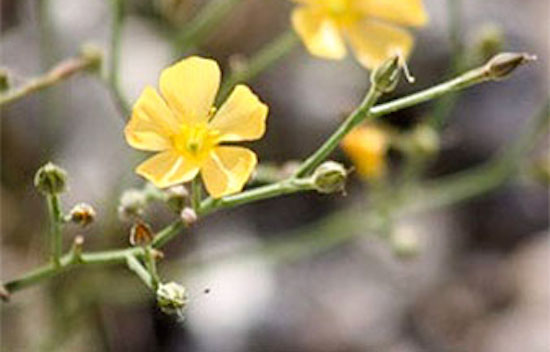The U.S. Fish and Wildlife Service announced today that it’s extending Endangered Species Act protections to four South Florida plants threatened by development — a move that could affect two major building projects.
Being added to the endangered list are a shrub, the Big Pine partridge pea, and two herbs, wedge spurge and sand flax — all species in the imperiled pine rocklands of southern Miami-Dade County and the Florida Keys.
MORE: India Saves Its Tigers Instead of Mining For $330M in Diamonds
Pine rocklands are characterized by limestone rock outcroppings with an overstory of slash pine. That habitat has been reduced to less than 2 percent of its historical extent, according to the Center for Biological Diversity, a conservation group whose lawsuit forced the agency to protect the plants.
“It’s sad to see that so much of South Florida’s rare and unique landscapes have been gobbled up by poorly planned development,” said Jaclyn Lopez, Florida director of the Convention on Biological Diversity (CBD), in a statement. “But it’s reassuring to know that with Endangered Species Act protections, these plants have a much better chance of surviving and recovering.”
CHECK OUT: Costa Rica Has Been Powered Only By Renewable Energy For 122 Days
With little remaining habitat, the plants are particularly vulnerable to sea-level rise and severe hurricanes associated with climate change.
The decision to protect the plants may complicate plans to build Coral Reef Commons, a Wal-Mart-anchored residential complex, and Miami Wilds, a theme park. Both projects would be erected in part of the last, largest intact tract of pine rockland outside Everglades National Park.
The species are already listed on Florida’s Regulated Plant Index as endangered, but that status requires only disclosure of project impacts on such plants and provides little to no habitat protection.
RELATED: California Bans Use of Harmful Devices Against Captive Elephants
The added federal protection would prohibit the commercial trade in the plants and protect them from damage, collection or movement on federal lands or anywhere activities are funded, authorized or carried out by federal agencies.
Another pine rocklands shrub, the Blodgett’s silverbush, is likely to become endangered in the foreseeable future, should may be added to the “threatened species” list, according to a notice to published this week in the Federal Register.
MORE: San Francisco Officially Declares Itself a No-Styrofoam Zone
The federal listings take effect at the end of October.
The four plants were first found to warrant protection under the Endangered Species Act in the 1980s, but a listing proposal was precluded by other priorities. FWS is completing the process now to comply with a settlement it struck with Florida conservation groups, including CBD, in 2011 that set listing deadlines for hundreds of species.
Reprinted with permission from E&E Publishing
Let The Activism Bloom: Click To Share – Photo by Mary Rose courtesy of Dade Chapter of the Florida Native Plant Society.





















Great story, thanks for posting:) GOD BLESS- GOD IS GREAT ALWAYS!!!:) HAVE A GREAT AND SAFE DAY EVERYONE!:)